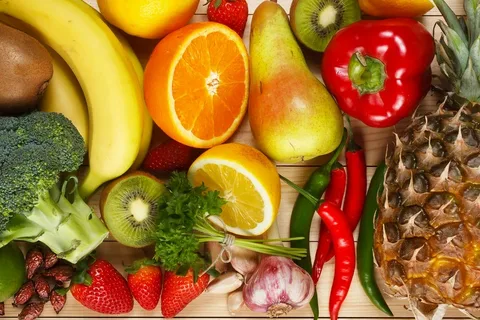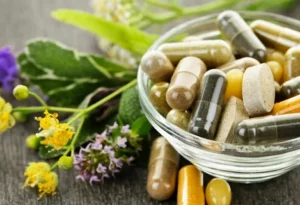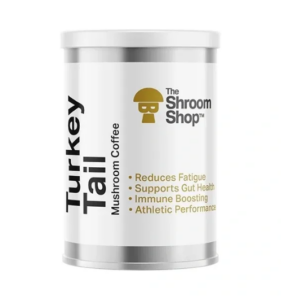Vitamin C, also known as ascorbic acid, is a vital nutrient for maintaining overall health. It’s a powerful antioxidant, aids in collagen synthesis, and enhances the immune system. While supplements are available, the best way to get your daily dose of Vitamin C is through fruits and vegetables. This guide will explore how to increase your Vitamin C intake naturally, the best sources, and tips for incorporating them into your diet.
The Importance of Vitamin C
Why Do We Need Vitamin C?
Vitamin C is essential for various bodily functions, including:
- Immune Support: Enhances the production of white blood cells.
- Antioxidant Protection: Neutralizes free radicals and reduces oxidative stress.
- Collagen Production: Crucial for skin, bone, and joint health.
- Iron Absorption: Improves the absorption of non-heme iron from plant-based foods.
- Wound Healing: Speeds up the healing process and helps in tissue repair.
Daily Recommended Intake
The recommended daily intake of Vitamin C varies by age, gender, and life stage:
- Adults: 65-90 mg/day
- Pregnant Women: 85 mg/day
- Breastfeeding Women: 120 mg/day
- Smokers: An additional 35 mg/day
Top Fruits Rich in Vitamin C
Citrus Fruits
Citrus fruits are renowned for their high Vitamin C content. They are also rich in flavonoids, which enhance the vitamin’s absorption and efficacy.
- Oranges: One medium-sized orange provides about 70 mg of Vitamin C.
- Grapefruits: Half a grapefruit offers around 38 mg.
- Lemons and Limes: One lemon or lime contains about 30-40 mg.
Berries
Berries are not only delicious but also packed with Vitamin C and other antioxidants.
- Strawberries: One cup of strawberries delivers approximately 89 mg.
- Blueberries: One cup contains about 14 mg.
- Raspberries: One cup provides 32 mg.
Tropical Fruits
Tropical fruits are excellent sources of Vitamin C, often containing even more than citrus fruits.
- Kiwi: One medium kiwi has about 71 mg.
- Mango: One cup of sliced mango offers around 60 mg.
- Pineapple: One cup of pineapple chunks contains about 79 mg.
- Papaya: One cup provides 88 mg.
Top Vegetables Rich in Vitamin C
Leafy Greens
Leafy greens are not just good for iron and calcium but also for Vitamin C.
- Kale: One cup of raw kale offers 80 mg.
- Spinach: One cup of raw spinach contains about 8 mg.
- Swiss Chard: One cup provides approximately 32 mg.
Cruciferous Vegetables
These vegetables are known for their health benefits, including high Vitamin C content.
- Broccoli: One cup of raw broccoli contains 81 mg.
- Brussels Sprouts: One cup of raw Brussels sprouts has about 75 mg.
- Cauliflower: One cup of raw cauliflower offers 52 mg.
Bell Peppers
Bell peppers are one of the richest sources of Vitamin C among vegetables.
- Red Bell Peppers: One cup provides about 190 mg.
- Green Bell Peppers: One cup contains 120 mg.
- Yellow Bell Peppers: One cup offers approximately 137 mg.
Other Vegetables
- Tomatoes: One medium tomato contains about 20 mg.
- Snow Peas: One cup of raw snow peas offers around 60 mg.
- Potatoes: One medium potato provides 20 mg.
Tips for Maximizing Vitamin C Intake
Eat a Variety of Foods
Incorporating a variety of fruits and vegetables ensures you get a broad spectrum of nutrients. Mix and match different sources of Vitamin C to keep your meals interesting and nutrient-dense.
Choose Fresh Over Processed
Fresh fruits and vegetables contain higher levels of Vitamin C compared to processed forms. Whenever possible, opt for fresh produce over canned or frozen options.
Cook Wisely
Vitamin C is sensitive to heat and water, so the way you cook your vegetables matters.
- Steaming: Retains more Vitamin C compared to boiling.
- Microwaving: Preserves nutrients better than other cooking methods.
- Raw Consumption: Eating fruits and vegetables raw maintains their full Vitamin C content.
Incorporate Vitamin C-Rich Snacks
Keep Vitamin C-rich fruits and vegetables as snacks. For example, carry an orange, some strawberries, or sliced bell peppers with you.
Add Vitamin C to Every Meal
Make sure to include at least one Vitamin C-rich food in every meal. This could be a side salad, a piece of fruit, or a vegetable stir-fry.
Use Citrus Juices
Incorporate freshly squeezed lemon or lime juice into your dishes for an extra Vitamin C boost. Use them in dressings, marinades, and beverages.
Smoothies and Juices
Blend fruits and vegetables into smoothies or juices to create a nutrient-packed drink. Combining different Vitamin C-rich foods can make a delicious and healthy beverage.
Freeze Fruits and Vegetables
If you have an abundance of fruits and vegetables, freeze them. Freezing preserves Vitamin C better than other storage methods.
FAQs About Vitamin C from Fruits and Vegetables
What are the best fruits for Vitamin C?
Oranges, strawberries, kiwi, and papaya are among the best fruits for Vitamin C.
How much Vitamin C do I need daily?
The recommended daily intake for adults is 65-90 mg, but pregnant and breastfeeding women, as well as smokers, may need more.
Can I get enough Vitamin C from vegetables alone?
Yes, vegetables like bell peppers, broccoli, and kale are excellent sources of Vitamin C.
Does cooking destroy Vitamin C?
Heat can reduce Vitamin C content, so it’s best to consume some fruits and vegetables raw or use cooking methods like steaming and microwaving.
Are frozen fruits and vegetables good sources of Vitamin C?
Yes, freezing preserves most of the Vitamin C content, making frozen produce a good option.
How can I add more Vitamin C to my diet?
Incorporate a variety of fruits and vegetables into your meals, use fresh citrus juices, and snack on Vitamin C-rich foods.
What happens if I consume too much Vitamin C?
Excess Vitamin C is usually excreted in urine, but extremely high doses can cause digestive issues like diarrhea.
Are citrus fruits the only good source of Vitamin C?
No, many other fruits and vegetables, such as berries, kiwi, bell peppers, and broccoli, are also excellent sources.
How can I retain Vitamin C while cooking?
Use cooking methods that preserve Vitamin C, such as steaming, microwaving, and avoiding overcooking.
Is it better to get Vitamin C from supplements or food?
It’s generally better to get Vitamin C from food, as whole foods provide a range of nutrients that work together for better health benefits.
Conclusion
Increasing your Vitamin C intake through fruits and vegetables is both simple and beneficial for your health. By incorporating a variety of Vitamin C-rich foods into your diet, choosing fresh over processed, and cooking wisely, you can ensure you meet your daily requirements. Remember, a balanced diet rich in fruits and vegetables not only provides Vitamin C but also a host of other nutrients essential for overall well-being.
- What To Do After Having Lip Filler - May 23, 2025
- What Are The Best Times To Take CBD Gummy Edibles - May 22, 2025
- How To Achieve A Youthful Look By Correcting A Downturned Smile - May 21, 2025



